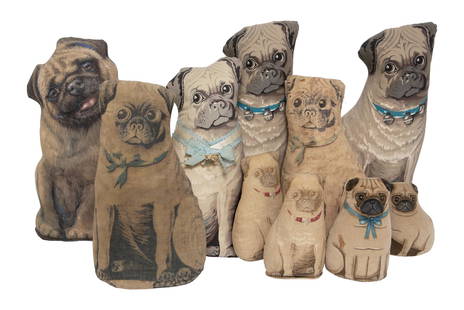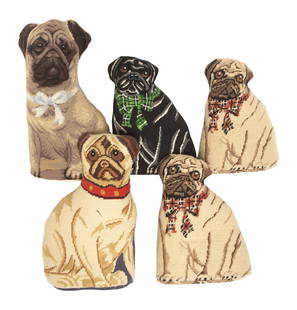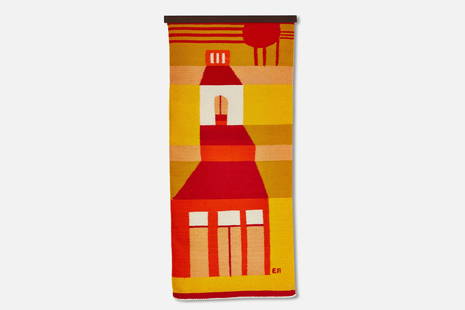
Christo, New York / Bulgaria (1935 - 2020), Wrapped Reichstag, Project for Berlin (yellow), 1992,
Similar Sale History
View More Items in Textiles & LinensRelated Textiles & Linens
More Items in Textiles & Linens
View MoreRecommended Home & Décor
View More






Item Details
Description
Christo New York / Bulgaria (1935 - 2020) Wrapped Reichstag, Project for Berlin (yellow), 1992 lithograph on paper Hand signed lower right. Biography from the Archives of askART: Following is The New York Times obituary of the artist, by William Grimes, November 19, 2009: "Jeanne-Claude, Christo's Collaborator on Environmental Canvas, Is Dead at 74" Jeanne-Claude, who collaborated with her husband, Christo, on dozens of environmental art projects, notably the wrapping of the Pont Neuf in Paris and the Reichstag in Berlin and the installation of 7,503 vinyl gates with saffron-colored nylon panels in Central Park, died Wednesday in Manhattan, where she lived. She was 74. A statement on the couple's Web site, christojeanneclaude.net, said the cause was complications of a brain aneurysm. Jeanne-Claude met her husband, Christo Javacheff, in Paris in 1958. At the time, Christo, a Bulgarian refugee, was already making art of wrapped packages, furniture and oil drums. Three years later, they made their first work together, a temporary installation on the docks in Cologne, Germany, that consisted of oil drums and rolls of industrial paper wrapped in tarpaulin. To avoid confusing dealers and the public, and to establish an artistic brand, they used only Christo's name. In 1994 they retroactively applied the joint name "Christo and Jeanne-Claude" to all outdoor works and large-scale temporary indoor installations. Other works were credited to Christo alone. Their collaborative approach, as described on their Web site, remained constant throughout the years. After he and his wife conceived an idea for a project, Christo made drawings, scale models and other preparatory works that were sold to finance the final project. With the help of paid assistants, they then did the on-site work: wrapping buildings, trees, walls or bridges; erecting umbrellas ("The Umbrellas," 1991); spreading pink fabric around 11 islands in Biscayne Bay near Miami ("Surrounded Islands," 1983). "We want to create works of art of joy and beauty, which we will build because we believe it will be beautiful," Jeanne-Claude said in a 2002 interview. "The only way to see it is to build it. Like every artist, every true artist, we create them for us." Jeanne-Claude Denat de Guillebon was born on June 13, 1935, in Casablanca, where her father, a French army officer, was stationed. After attending schools in France and Switzerland, she earned a baccalaureate in Latin and philosophy in 1952 from the University of Tunis. In addition to her husband, she is survived by their son, Cyril Christo of Santa Fe, N.M. In 1962, Christo and Jeanne-Claude caused a sensation when, in response to the building of the Berlin Wall, they blocked the tiny Rue Visconti in Paris with a barricade of oil drums. Jeanne-Claude managed to stall the police as they closed in, arguing that the work, "Wall of Oil Barrels, Iron Curtain," should stay in place a few hours more. Jeanne-Claude and Christo moved to New York in 1964 and embarked on grander, more theatrical projects. Nothing, it seemed, was too large to be shrouded in fabric. In the late 1960s, they wrapped the Kunsthalle in Bern, Switzerland, just one of many buildings, walls and statues to come. In 1969 they wrapped a million square feet of coastline near Sydney, Australia. Although wrapping remained the couple's signature, they staged other environmental projects and public displays. At the Documenta exhibition in Kassel, Germany, in 1968, they erected, with the assistance of two giant cranes, an inflated cylindrical fabric "package," in appearance a bit like a stretched-out Michelin Man, that stood nearly 280 feet tall. The projects became communal events, during construction and after. Millions of viewers were attracted to "The Umbrellas," installed simultaneously in 1991 in Ibaraki, Japan, and at the Tejon Ranch in Southern California. "The Gates," a series of flapping bannerlike panels installed in Central Park in 2005, also attracted more than five million viewers during the two weeks that the work lasted. Mayor Michael R. Bloomberg, in a statement released Thursday, praised "The Gates" as "one of the most exciting public art projects ever put on anywhere in the world — and it would never have happened without Jeanne-Claude." The couple often had to overcome stiff resistance to their projects from municipal officials and citizens worried at the possible environmental impact of their work. Some critics dismissed their work as a repetitive series of stunts devoid of intellectual content. More often than not, however, the projects, once in place, turned out to be enormously popular. Before Jeanne-Claude's death, she and Christo were at work on two longstanding projects: "Over the River," a series of fabric panels to be suspended over the Arkansas River in Colorado, and "The Mastaba," a stack of 410,000 oil barrels configured as a mastaba, or truncated rectangular pyramid, envisioned for the United Arab Emirates. Like all of their projects, these were intended to be temporary. Whether executed in oil drum or brightly colored fabric, the art of her and her husband, Jeanne-Claude said, expressed " the quality of love and tenderness that we human beings have for what does not last." Source: http://www.nytimes.com/2009/11/20/arts/design/20jeanne-claude.html Biography from the Archives of askART Photo of Christo & Jean Claude An environmental installation artist and painter of architectural landscape drawings, Christo has become known for "wrapping" famous buildings and geographical landmarks with plastic and woven-fabric sheets. His projects, usually with the assistance of his wife and dealer Jeanne-Claude, include wrappings of the "Berne Kunsthalee" in 1968, a coastline area in Australia; the Reichstag, in Berlin; and the Pont Neuf in Paris. In California, he built a running fence 18 feet high and 24.5 miles long and in Japan and California, created a running series of 3,100 umbrellas. In February 2005, the Christos oversaw the installation of one of their most attention-getting endeavors, The Gates, Central Park, New York, 1979-2005. Opening February 11 and lasting sixteen days, it was the biggest art project in the history of New York City. Seventy-five hundred frames, sixteen feet high, were placed at intervals along 23 miles of footpaths in the park. Suspended from the frames were orange tinted fabric banners, intended to convey a "splash of sunrise" and what Javacheff Christo described as "a visual golden river". But declining to say much about the project, the artist said: "This project is not involving talk. It's a real, physical space. It's not necessary to talk. You spend time, you experience the project". (Tribune) Javacheff Christo was born in Gabrovo, Bulgaria, on June 13, 1935, the same day as his wife, Jeanne-Claude. He studied at the Fine Arts Academy in Sofia from 1952 to 1956, and then worked at the Burian Theatre in Prague in 1956. He did further study in Vienna in 1957, and the following year went to Paris where he began creating wrapped, packaged objects. He and his wife have lived primarily in New York City, although they travel frequently. They do not use their last name, Javacheff, although their son Cyril took the last name of Christo. According to Bedford McIntosh, "In the past few years they have come to refer to themselves as the 'artists Christo and Jeanne-Claude,' recognizing her critical role in the projects. The titles on their more recent projects reflect this." 27"H x 19 1/2"W, 28"H x 22"W (frame)
Buyer's Premium
- 30%
Christo, New York / Bulgaria (1935 - 2020), Wrapped Reichstag, Project for Berlin (yellow), 1992,
Estimate $800 - $1,200
13 bidders are watching this item.
Shipping & Pickup Options
Item located in Indianapolis, IN, usOffers In-House Shipping
Local Pickup Available
Payment
Accepts seamless payments through LiveAuctioneers

TOP



















![[Counter-Culture] [Blazek, Douglas] Bukowski, Charles The Curtains are Waving and People Walk: [Counter-Culture] [Blazek, Douglas] Bukowski, Charles The Curtains are Waving and People Walk Through the Afternoon Here and in Berlin and in New York City and in Mexico (San Francisco: Graham Mackint](https://p1.liveauctioneers.com/65/275517/144719993_1_x.jpg?height=310&quality=70&version=1673808587)








![[QUEEN ELIZABETH II] HARTNELL, NORMAN. Panel of embroidery, a prototype for the Coronation Dress of: [QUEEN ELIZABETH II] HARTNELL, NORMAN. Panel of embroidery, a prototype for the Coronation Dress of Queen Elizabeth II, 1953. Presentation inscription with a drawing containing a key to the emblems in](https://p1.liveauctioneers.com/292/263885/137590472_1_x.jpg?height=310&quality=70&version=1664914638)



















































